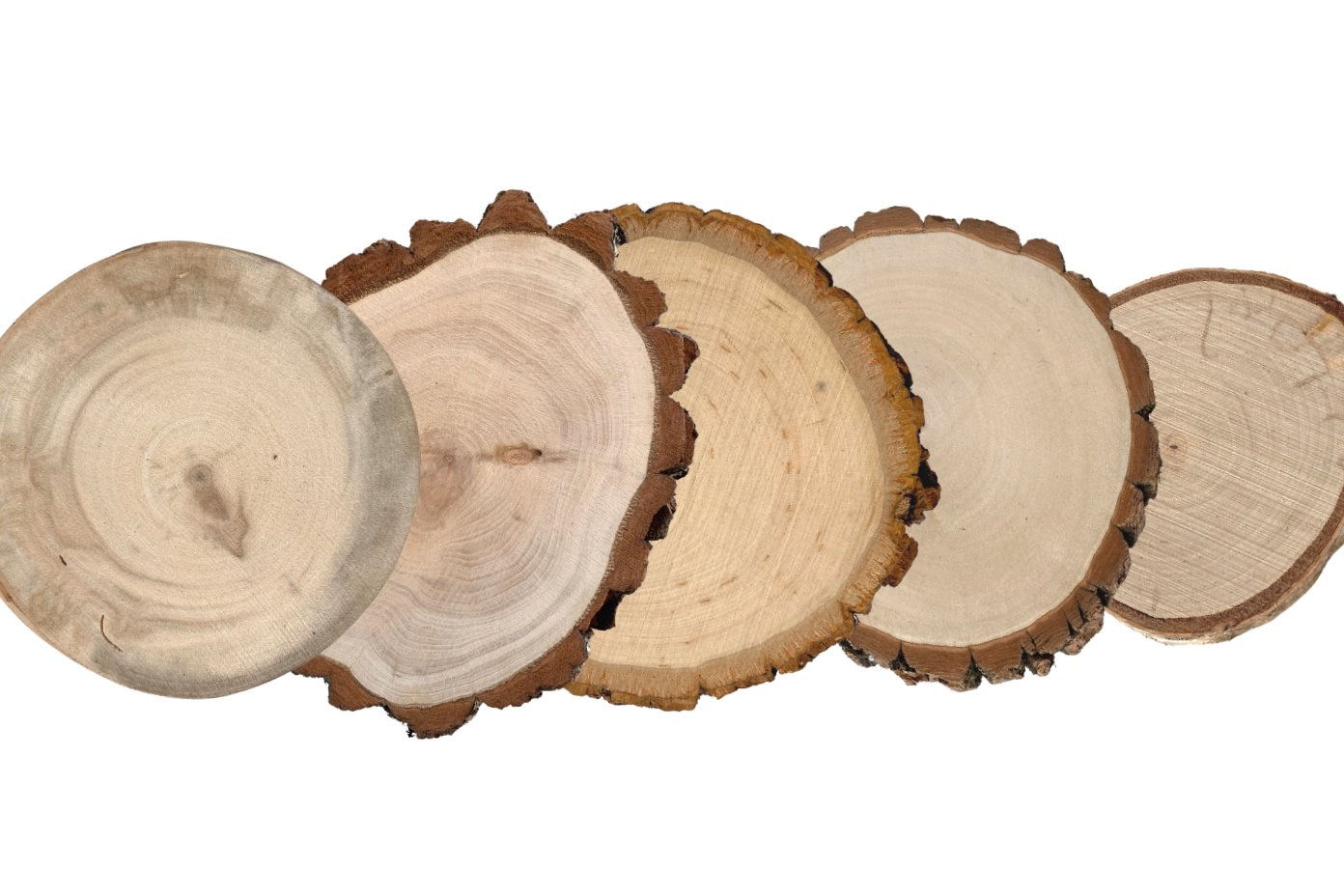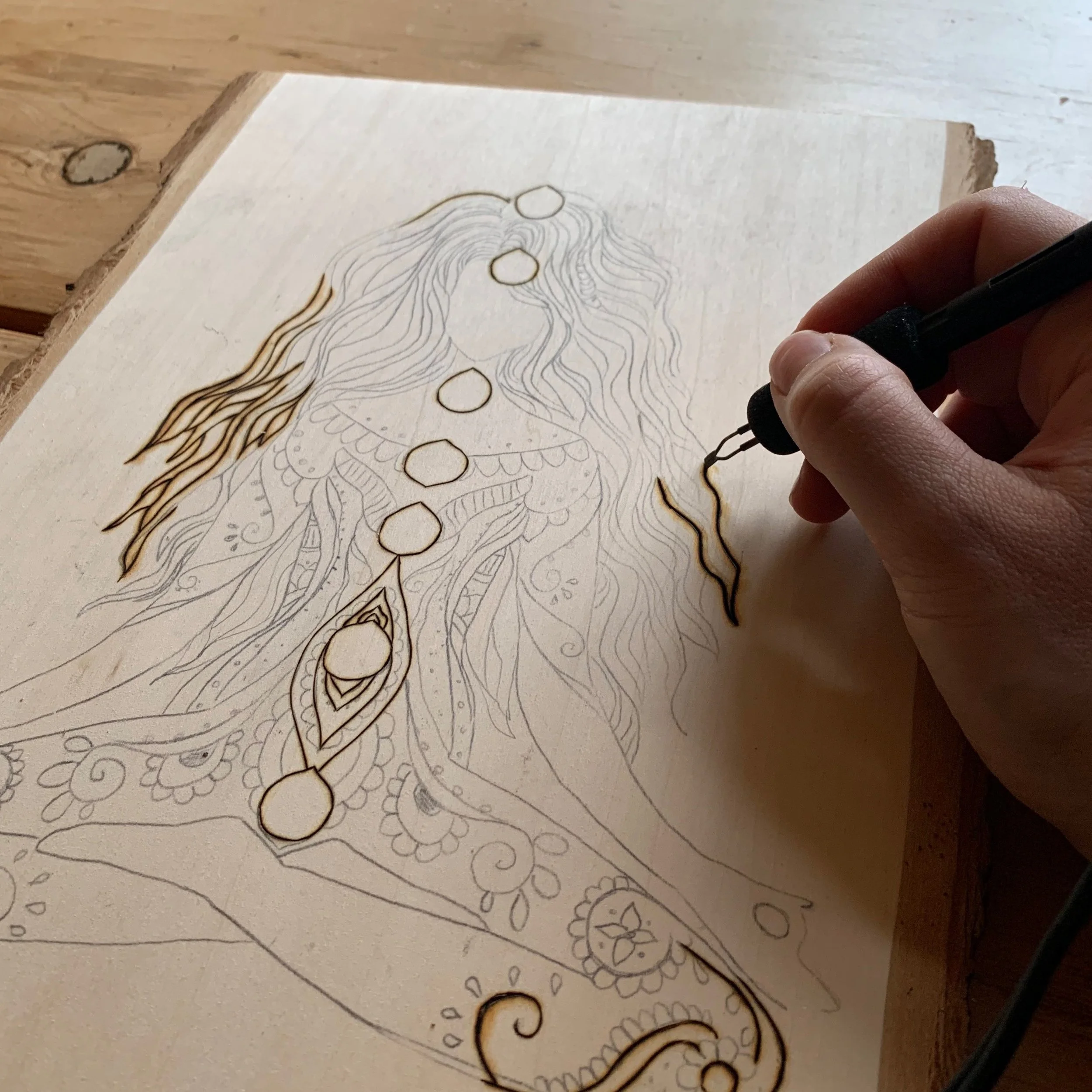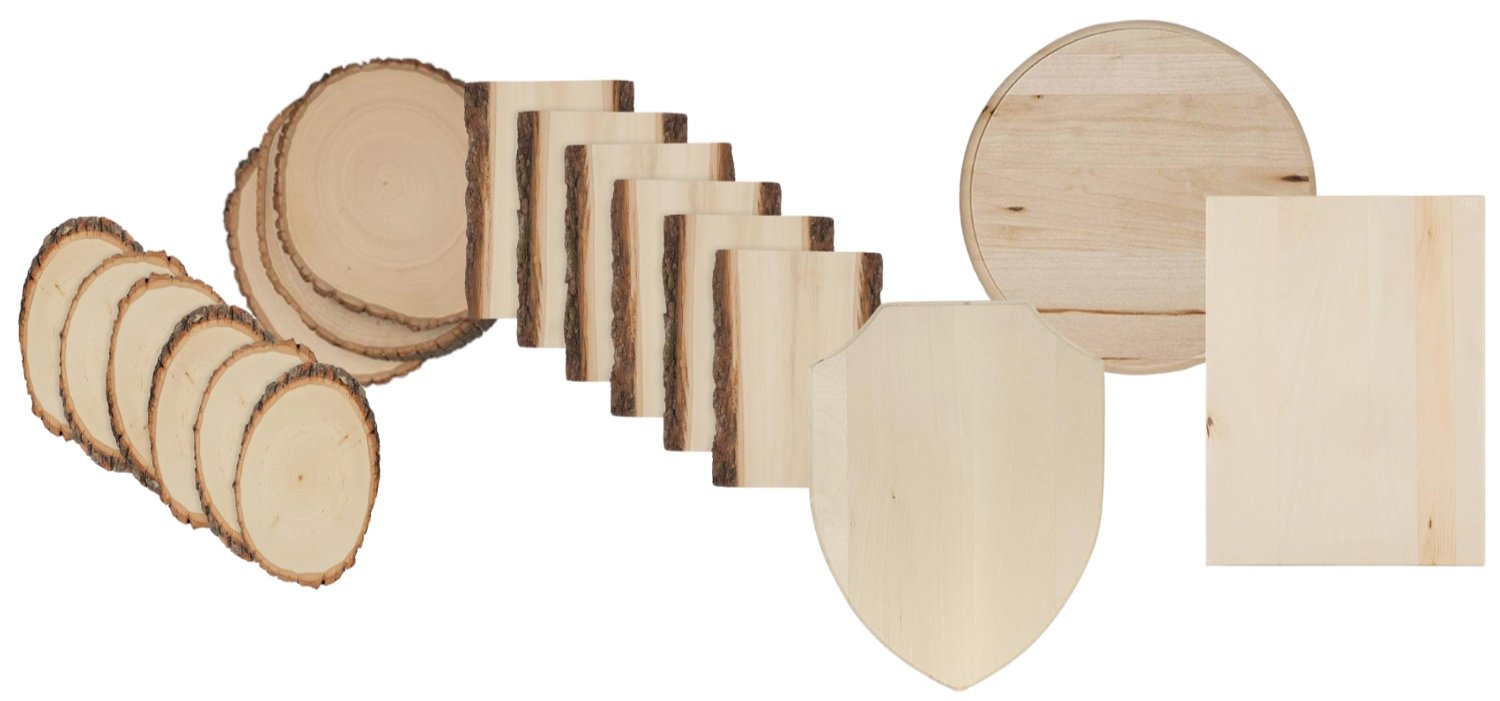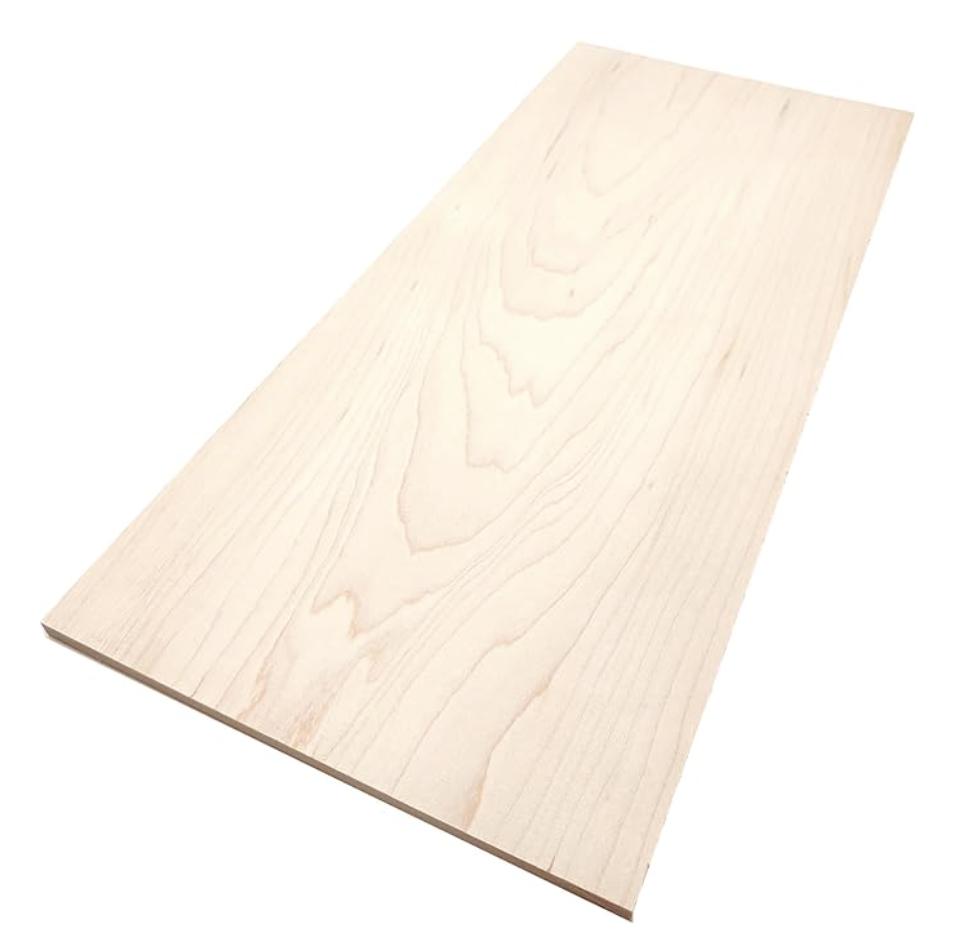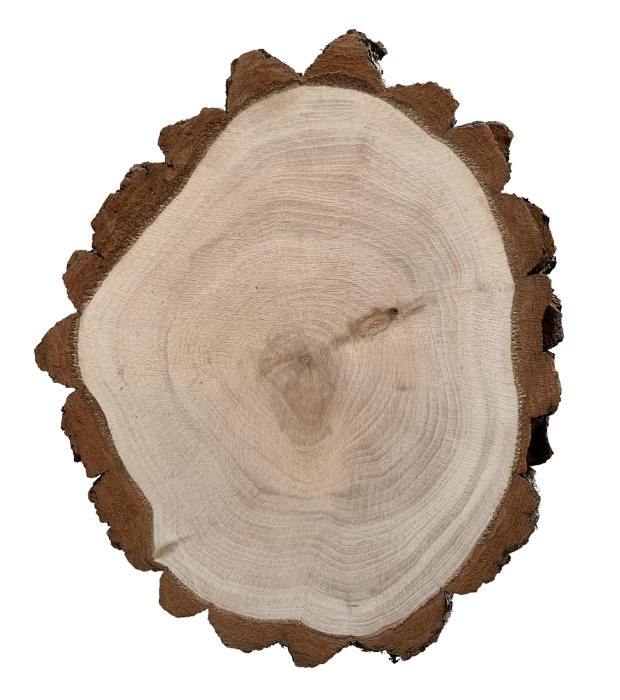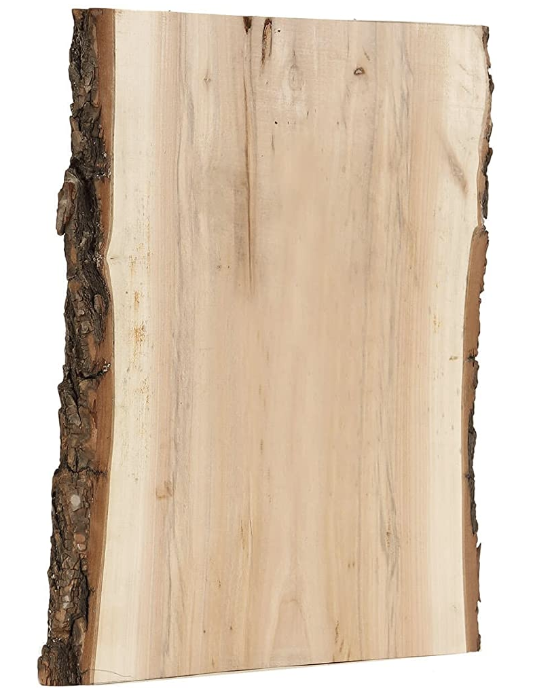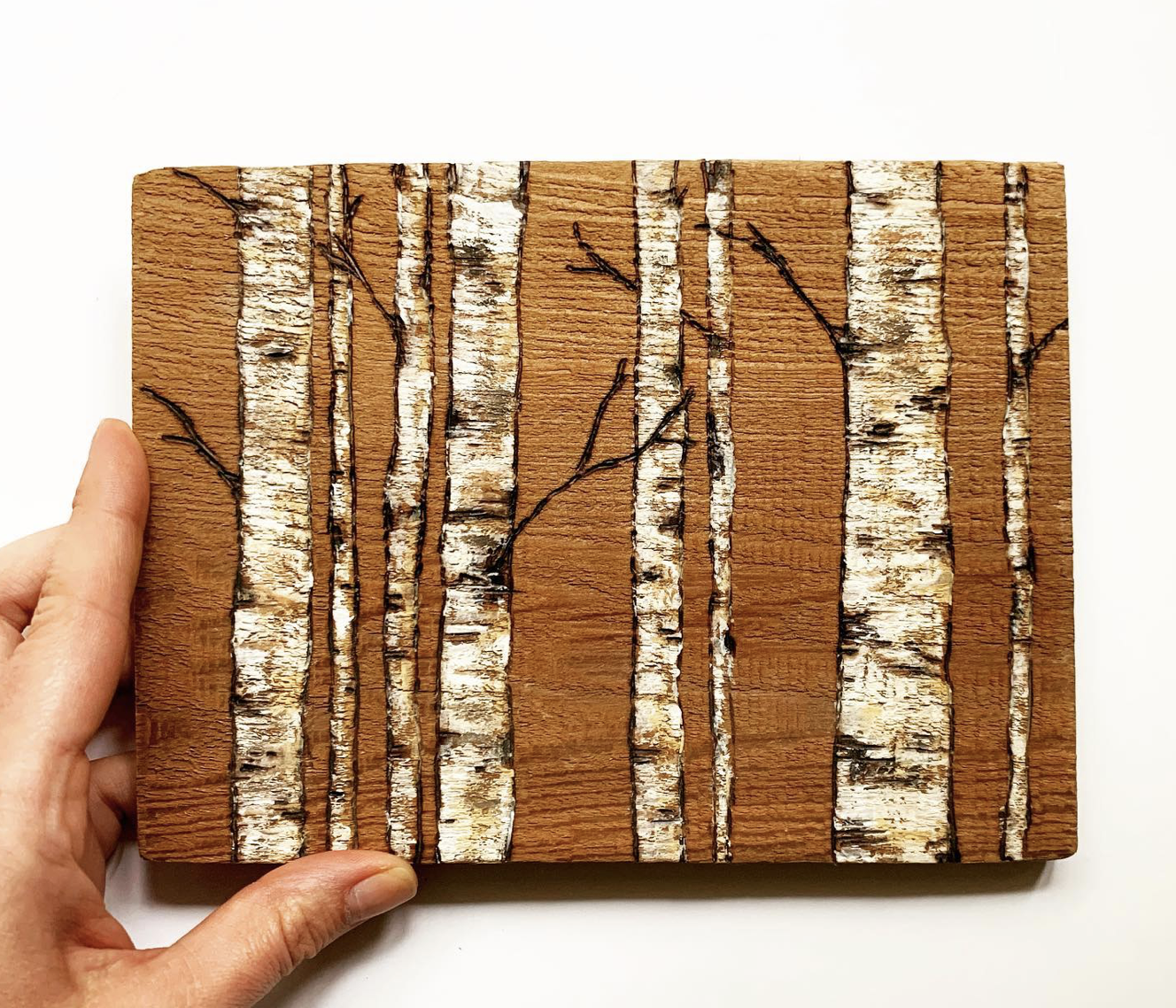Wood is the most common surface for pyrography! There are other surfaces you can burn on, but wood is available almost everywhere and is definitely a great place to start if you are new to wood burning.
Always look for unfinished, sanded smooth, and dried wood. These are musts for pyrography.
There are also some woods you should absolutely avoid and that list, you can find here.
Always wear a mask and follow safety precautions when burning on any type of wood or alternative surface. This is super important regardless of wood type.
And onto what you will want to burn on! Below are the top wood surfaces to burn on according to our own experiences as well as from polling hundreds of pyrographers in the community.
Please note there are affiliate links below. We always link to products we know and love and personally have used ourselves!
Top 9 Wood Surfaces to Burn On
Basswood
Basswood is a very common wood species that is easy to find and easy to burn on.
It is a favorite amongst pyrographers because of its availability, light color (creating nice contrast with burn lines) and for the way it burns. It is easy and smooth to burn on.
The grain is visible, but still smooth so it doesn’t effect your burn as much as other woods.
The even, light color makes it the perfect canvas for wood burning. Oh and the color of the wood only darkens slightly when adding any oils or finishes. Other woods can get much darker.
It is easily found with the very classic tree-bark live-edge, making the perfect rustic rounds.
The bonus with basswood is that because it’s commonly available, it comes in loads of different shapes, sizes, live edge, no live edge, thick or thin, etc… We know and love Walnut Hollow for their variety of wood, sustainability efforts, as well as the quality! Walnut Hollow’s collection of Basswood are always sanded smooth and are ready to burn on:
Cherry
Cherry is such a lovely wood to burn on. There are many variations (color and grain) which may be distracting for some, but for others, this adds character.
One slight downfall is that cherry contains some natural sap, which can release potentially irritating fumes when burned so please, as with any wood surface you are burning on, proceed with safety and caution.
I love cherry for it’s warm, reddish tone and rich colour. You can create beautifully detailed pyrography art on it at a slightly higher heat setting (or slower pace).
Be careful in adding any finishes (stains or even colourless oils and sealers), as cherry wood darkens quite a bit. You can still see the burn lines, but it decreases the contrast the pyrography marks make.
Here is an example of a cherry wood slice with resin on it. The colour is rich and beautiful but if your design has light shading, it could disappear after a finish is applied!
Birch
Birch is a harder in structure, when it comes to pyrography, which means you either turn up the heat or move slower with it. Because it is a harder wood, it allows for incredible details.
Even though it is slightly harder to burn on, it still has beautiful qualities like the light blonde color, stunning white live edge bark and subtle grain lines that don’t interfere with the burning. It typically has a bright, creamy-white color or yellowish tint and a satin-like sheen to its finish which makes for nice contrast when burning.
Basia enjoys burning on end grain, like on this round live edge wood slice above, especially when the wood slice has the bark in tact. Rachel prefers face grain wood which has the grain running across the entire wood slice.
In general, birch trees aren't as big (or thick) as other hardwoods, so the slices you get from them usually aren't big either. Because of this, companies make birch wood plywood. As with ANY plywood, these planks use a lot of glues which can be dangerous to burn on. Always wear the safety gear, no matter what.
Aspen
Aspen burns very similar to basswood in our experience, but isn’t just one solid color. It has lovely variations in color to it, which is my favourite part about this wood - it's easy to recognize and the colours on it can add to your design. If that doesn’t work for you or your design, try a face grain cut slice (the planks versus the rounds). Not sure what face grain is? Check out our Intro to Wood as a Pyrography Artist blog post to learn more.
Aspen is softer when burning making it feel buttery smooth and satisfying.
The grain is subtle and you can barely feel anything at all when burning, especially if sanded properly!
Walnut
Walnut is such a juicy wood to burn on. It has a lovely medium/dark brownish color to it, and smells amazing when you burn it, however it is more on the expensive side.
It also contains a natural compound called juglone, which can cause respiratory irritation when burned in large amounts (if you burn hot) or over long periods of time. It’s essential to work in a well-ventilated area and wear a mask and follow ALL safety precautions, as with any other woods you are working with.
This is one of those woods that soaks up finishes and darkens quite a bit when you put any finishes. This could make your lines and shading not as visible… Any light shading will disappear.
However, add a finish to this and just watch the natural grain pop and shine; So much dimension in this wood species!
The grains are visible but don’t interfere with burning. It is a dream is you burn deep like I do.
We know and love Walnut Hollow for their variety of wood, sustainability efforts, as well as the quality! They have buttery smooth Walnut.
Maple
Maple is one of Rachel’s personal favorites to burn on. She love the subtle grain in it (which does not get in the way of burning), and the color of the wood makes a great canvas.
It is harder than basswood, and is just lovely to burn on at a slightly higher heat. It is nice and lightly colored, lending itself well for pyrography. Finishes will darken the surface but not very much so you will not loose your work.
Maple is a bit more costly than basswood, but is worth it.
Sourwood
Sourwood is one of Basia’s favourites due to the large and intricate live edge bark on it. The bark is so stunning, it creates it’s own frame of sorts!
The surface is lighter in color making a great canvas for burning and even though it is a hardwood, with some patience, higher heat and a slower pace, it is still a pleasure to burn on.
Poplar
Poplar is another great choice for wood burning. It is another light colored option, although often it has a green tone to it which not everyone likes. There is a process you can take to get rid of this but it must be completed after you burn (because burning on the treatment is dangerous) and may require a bit of sanding so ensure your burn lines are fairly deep.
The grains can get in the way a bit, but otherwise it is a fairly smooth burn. It is quite similar to maple, but less expensive. A great choice for pyrography and very accessible and cheap.
Cedar
Cedar has a beautiful rich red color in the center and a lighter color on its edges.
It burns really nicely and is lovely to work with because is a softer wood. It feels like butter. It’s easy to understand pyro tools and the variety of nibs and what they can do because you require less control when the wood is softer, can burn at a higher temperature, therefore allowing you to play around a little.
WARNING! Cedar is a very resinous wood. All kinds of cedar, but especially ones like Western Red Cedar, contain natural oils and resins, (creosote) which may release harmful fumes when burned (more fumes when heated very high). I wouldn’t go out of my way to buy this wood for a project, but I had a lot on hand after a building project. Always wear a mask and follow safety precautions when burning on any type of wood.
Also, beware when staining, that red color deepens quite a bit, so always practice before adding a finish to a cedar wood burned piece.
A great place to learn more about your favorite wood types is at wood-database.com - here you will find all the specs you need!
Runner-up Wood Surfaces to Burn On
Beech
Cork (Be careful with this one! Not all cork is made with glue, so make sure to use natural cork which is made directly from the bark of the cork oak tree).
Ash
Mahogany
Alder
Sycamore
Cypress
Willow
Check out the DO NOT BURN ON list here.
Click Here for pyrography surfaces to burn on that are not wood!
Always wear a mask and follow safety precautions when burning on any type of wood or alternative surface. This is super important regardless of wood type.
